California Residents Eager To Meet Water Restriction Standards But Unsure How

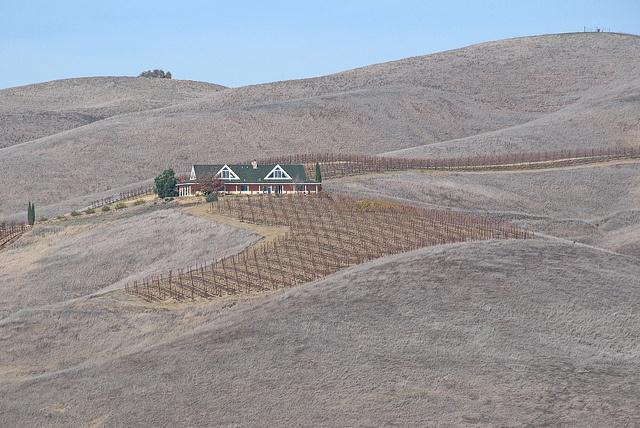
By Randy Paynter
Across California, people are flushing toilets less, taking shorter showers, watering lawns less – yet, the state did not collectively cut its water usage anywhere near its goals last month. As such, the California government has instated unprecedented emergency mandates for water conservation, requiring businesses and residents to immediately reduce their water usage by an average of 25 percent. But there is still a problem. Many Californians are not sure how they’ll achieve this. Even the state’s most passionate, environmentally conscious citizens are struggling with how they will save water to meet these standards.
At Care2, our engaged network of advocates are strong supporters of environmentally sustainable practices, yet a recent poll of our community in California shows that 36 percent of these self-reported environmentalists are uncertain how they’ll reduce their water use enough to meet California’s conservation mandates. Yes, some indicated they would install a greywater system (19 percent), and 5 percent reported they are willing to invest more than $2,500 to cut their water use. But a surprising number are unsure if these efforts will even be enough.
The types of people Care2 polled are California-based members who like, share and comment on articles about mindful and conscious living. They are people who are consistently affixing their names to petitions campaigning for more environmental consideration and action from key policymakers and influential business players.
In the last year alone, Care2 users generated more than 5 million signatures on environment-related petitions, and championed major issues like rejecting the Keystone XL pipeline and protecting New York’s drinking water from fracking. Around 800,000 of those signatures last year came from Californians alone.
If our users are struggling to find ways to reduce their water use, then other residents of the Golden State must also face a difficult task. A study by the Hamilton Project shows that California has a history of heavy water use, and a Californian city like San Diego uses about twice as much water as Sydney, Australia, a city with a similarly dry climate.
Yet, Californians are indeed taking action to curb their habits. According to the Public Policy Institute of California, even while the state’s population has grown, per-capita water use has declined significantly. The number of gallons used per day dropped from 232 in 1990 to 178 in 2010. Further, nearly 90 percent of respondents to our poll indicated that they have already invested some amount of time and/or money to reduce their water consumption.
Even despite their uncertainty about how to accomplish it, many Californians are in agreement that the state needs to cut water use further. Seventy-one percent of Care2 respondents say they think the state needs to take more actions to ensure the effects of the drought are mitigated. Many have wondered, on a national scale, if we should be eating fewer almonds or avocados and eating less meat, as some of the state’s heaviest water users are in agriculture and livestock. Water recycling projects or desalination technologies could help, but they are expensive.
The unpredictable El Niño weather phenomenon is offering a glimmer of hope after more than three years of extreme drought, but at what cost? In the end, there is no magical fix to the drought woes, and cutting urban water consumption, as Gov. Jerry Brown mandated, is one part of the puzzle. The poll showed that people across California are eager to take action, but there needs to be a framework in place to help these citizens meet these requirements and preserve the state’s diminishing water supply effectively.
Image credit: Flickr/John Weiss
Randy Paynter is the Founder & CEO of Care2, a social network of nearly 30 million citizen activists standing together for good, and helped pioneer online citizen advocacy with the launch of the PetitionSite.com. Care2 helps individuals start petitions and make a difference in their community while helping over 1500 nonprofit clients recruit more than 40 million prospective donors worldwide. Care2 is a profitable B Corporation, or social enterprise, using the power of business as a force for good. Randy holds an AB from Harvard University and an MBA from Stanford’s Graduate School of Business.
Unilever, Patagonia, WWF and Greenpeace viewed as most sustainable brands


In this year's GlobeScan/Sustainability Leaders Report over 800 experts were asked, unprompted, which companies are leaders in integrating sustainability into their business strategy, and once again Unilever features as the top mentioned company by a significant margin (38%, up 5 points from 2014).
Patagonia is the only other company to be mentioned by more than 10%t of experts and remains in second place. BASF is the only newcomer to the top 10 rankings list in 2015 with three percent of mentions. Other companies listed in the top 10 include: Interface (8%), Marks & Spencer (6%), Natura (5%), IKEA (5%), Nestle (4%), GE, Nike and Coca Cola (each respectively at 3%).
For the first time, experts were also asked about NGOs and Governments. WWF and Greenpeace stand far ahead of the NGO pack as far as perceived sustainable development leadership, followed by Oxfam and World Resources Institute.
Germany (25%) and Scandinavian governments (Sweden 21%, Denmark 16% and Norway 13%) dominate the country leadership ranking.
Eric Whan, director of Sustainability at GlobeScan, commented: “While the ability to engage and collaborate drives the reputation of NGOs, respondents primarily measure the leadership performance of governments and companies by how well their values align with their sustainable development goals. And increasingly so, experts believe that corporate leadership requires integration of sustainability into core business models. For governments, effective action on energy and climate change is viewed as the second most important quality of a true leader—a timely finding as Paris looms.”
Read the full report here.
Picture credit: © Tang90246 | Dreamstime.com - Brand In Yellow Note Photo
Disaster Relief Efforts: The Private Sector Has a Role to Play
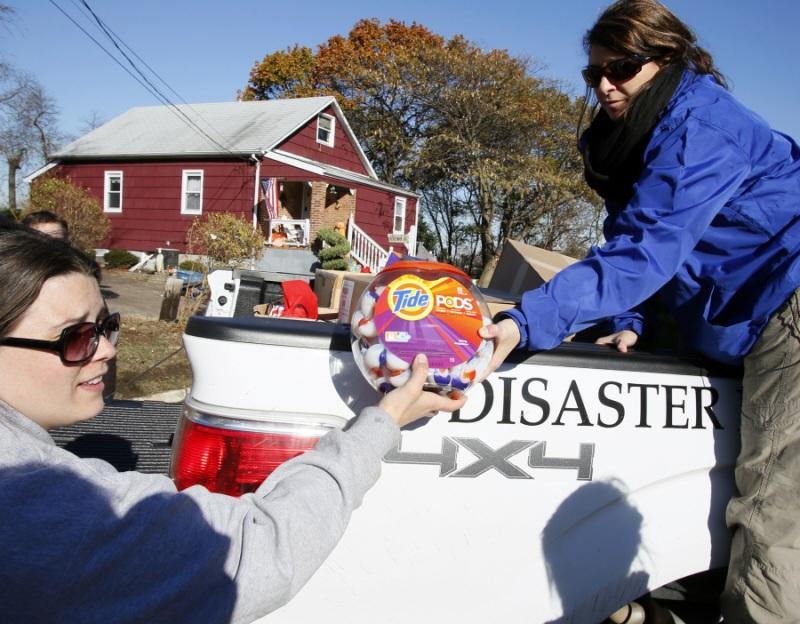

When disaster strikes, it's often the small things that seem to go by the wayside. The bottle of laundry detergent you just bought for today's batch of laundry, diapers to clothe the baby and the family's toothpaste and toothbrushes become secondary considerations in the midst of an earthquake, flash-flood or fire.
And strange as it sounds, so does potable water, which is often jeopardized during a natural disaster. After an emergency, community water sources and purification systems are often at risk for contamination either by polluted water sources (such as in the case of a flood) or other bacteria.
That's where Procter & Gamble (P&G) often comes in. The company best known for household and personal care products like Tide, Charmin and Oral-B toothbrushes is gaining notoriety for its forward-thinking approach to disaster relief.
Last month, after a series of earthquakes and aftershocks devastated large portions of infrastructure in Kathmandu, Nepal, P&G's Disaster Relief team was on the ground to help organize relief. With the support of non-governmental organizations and international brand partners, P&G has been distributing water purification packets to families, as well as monetary funds to relief organizations at the head of Nepal's many-pronged response program.
Portable drinking water purification methods have been around for ages. In the 1940s, tablets developed by Harvard University became a regular part of a U.S. soldier's mess kit. This additive, which was made of a chlorine compound, was a primitive version of the purification sources used today for turbid or contaminated drinking water.
P&G's Children's Safe Drinking Water Program, however, takes this innovation one step further by making purification packets easily dispensable in disaster areas. The packet, which contains chlorine and other essential ingredients, can be added to turbid water and produces potable water within minutes.
"The packets are actually an excellent way to remove that contamination," explains Allison Tummon-Kamphuis, who leads P&G's Children's Safe Drinking Water Program. "There is a visual signal that your water has been cleaned, and also it makes it drinkable by killing the bacteria and viruses."
According to the World Health Organization, 2.2 million deaths occur each year due to complications related to water-borne infections. Most of the victims are children. Poor nutrition, exposure, environmental contaminants and other factors create a cyclical problem that is hastened when a natural disaster sets in. Providing safe drinking water packets helps to break this chain and makes it easier to protect a community's smallest members from water-borne diseases.
Disaster zones aren't the only place that P&G's water packets are found, however. Its safe drinking water resources also go to remote villages and areas where potable water and other basic amenities are difficult to find.
"We have worked in schools and clinics, emergency relief [settings]," Tummon-Kamphuis told us, noting that the program has been used in countries across the globe and in places where water balance is an issue -- "such as Latin America, Sub-Sahara Africa and Asia.
"Through partnership, we have been able to provide nearly 800 million of the little packets. One packet purifies 10 liters of water. [That] is more than 8 billion liters of water around the world," Tummon-Kamphuis said.
The company's disaster programs also provide material assistance to disaster victims who have lost property, or are temporarily in community shelters. Products like shampoo, laundry detergent and personal care products become more than a comforting reassurance to a person who has lost his or her home. They are the essential ingredients to regaining independence after a disaster.
"As a company, P&G has been responding to disaster [needs] for many, many years. The objective of our program is to make a meaningful difference during times of disaster by providing the products that we make when they are needed the most," said Claude Zukowski, who manages the company's global disaster relief initiative.
Tummon-Kamphuis pointed out that the company's efforts in these areas are often enhanced by the partnerships it forms with NGOs, which become the on-the-ground distributors and educators during post-disaster relief. Organizations that have worked with P&G and help to distribute the packets include the Red Cross, UNICEF and Save the Children.
And it's not just people who receive assisting through P&G's efforts. The company has also been proactive in making sure that the most vulnerable victims receive food as well.
In March 2012, after tornadoes ripped through parts of the Midwest, the company shipped caseloads pet food, including IAMS, Eukanuba and Natural Pet products, to the tri-state area. Fifteen tons of pet food went to feeding the animals displaced by natural disaster.
P&G's emergency programs have also become fertile ground for engaging others in humanitarian efforts. Elizabeth Ratchford, P&G's communications manager, said that the company regularly involves employees in its preparatory efforts, as well as in actual relief efforts. The process helps elevate employee engagement and allows those who have a genuine interest in humanitarian relief to showcase their skills. Employees from 18 different P&G brands join together to help pack the shipments for the volunteer relief program. The experience gives them an up-close view of the volume of response that is often needed after a natural disaster, such as the events in Nepal.
"We also allow them to write personalized notes on cards that we put in with the kits," said Zukowski, who noted the personal participation helps engage the employees in the project.
Tummon-Kamphuis said the water purification project also promotes employee engagement by involving staff in community outreach and education.
"[In the] Children’s Safe Drinking Water Program, we actually have a network of very enthusiastic and passionate employees who are ambassadors for our program and really are raising awareness for global water innovation [programs] and water hygiene overall," Tummon-Kamphuis said.
Funding for the disaster relief programs mainly comes from the company and the brands it promotes, but employees and community members also contribute to P&G's disaster relief initiatives. P&G recently set up a matching gift fund for Nepal earthquake victims, and is collecting public donations for use by relief agencies. AmeriCares, Save the Children, International Medical Corps and other agencies receive funding through P&G's efforts.
In 2012, scientists working on P&G's Children's Safe Drinking Water Program were awarded the Economist Innovation Award for the program's success in transforming lives in post-disaster recovery. This year brought recognition to its teams as well, with three separate Edison Awards for innovation that brings positive impact to the world. P&G's ongoing success is testament that innovative businesses, combined with forward-thinking corporate responsibility programs, can elevate a community and change a world.
Images courtesy of P&G.
GE Introduces the 'Smart' Digital Wind Farm
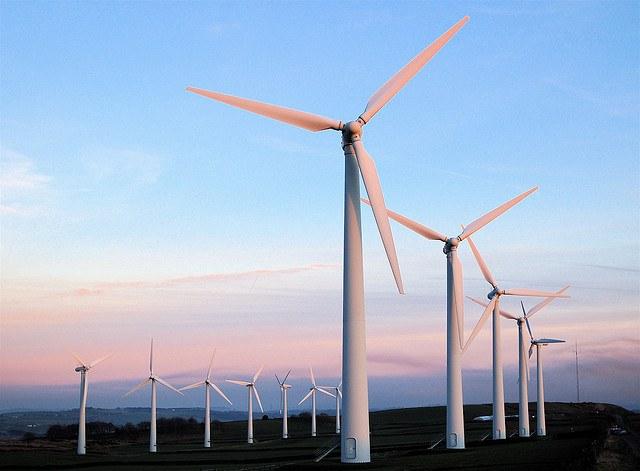

The wind energy market has been growing by leaps and bounds lately. The Global Wind Energy Council (GWEC) reports that the industry surged ahead by more than 40 percent in 2014, surpassing the 50-gigawatt mark. That's an impressive gain, given the market's slowdown in 2013. Worldwide installations stood at 369,597 megawatts by the end of 2014, with China, the U.S. and Germany leading the pack.
But there's more good news for wind generation. According to General Electric, it is on the cusp of developing the world's first digital wind generation system -- an innovation that would allow the company to transform its approach toward wind generation and boost output by 20 percent.
GE announced the news this past week, just in time for the American Wind Energy Association annual conference and trade show, which took place in Orlando, Florida.
Rather than developing faster and better turbines, GE has effectively sized-up the wind farm concept and developed a way to improve its performance as a whole. The new technology effectively allows wind operators to project possible upgrades and expansions to the wind farm, such as where to put new turbines, possible generation problems and anticipated output efficiency.
Equally groundbreaking, the new technology also allows the turbines within the farm to communicate with each other about wind conditions and performance. The result is a unit of turbines that work as a interconnected system, rather than a line of independent wind generators.
GE projects that the new digital wind system could help increase wind energy value by $50 billion (assuming that all wind farms were using GE's new technology). It's encouraging that the new software is designed to work not only with GE turbines, but its competitors' as well.
The new technology is meant to dovetail with GE's PowerUp Platform, "a results-based customized suite of software and hardware-enabled technologies" that the company released 18 months ago. According to GE, its benefit is in its ability to gauge and account for environmental factors that affect wind turbines' performance. Using this platform, says the company, can boost output by as much as 5 percent and increase revenue potential for wind farm operators.
With the announce of its latest technology, GE Power and Water's CEO and president, Steve Bolze, noted that today's most forward-thinking businesses are actually being shaped by digital innovation.
"The greatest opportunity lies in energy," Bolze said. "The question is not whether to start down this path … it’s about knowing how to get the most out of your digital transformation. That’s what will separate industry leaders from those left behind."
Image: Charles Cook
Why Sri Lanka's Historic Mangroves Move Matters


Huge news for the environment: Sri Lanka's new government just took the unprecedented, historic step to protect all of its mangroves. The move, the first of its kind anywhere in the world, will provide long-term environmental, social and, last but not least, economic benefits to the Indian Ocean island nation, and provide a model for other vulnerable tropical nations to follow.
The importance of mangroves
Mangroves, which thrive in the mixture of sea and freshwater along coastlines, help maintain sea levels and hold back storm surges, forming a wall against flooding. The hearty, shore-hugging plants encompass some of the world's most spectacular biodiversity and form a powerful natural barrier, keeping our water clean, our beaches strong and tempering the power of tropical cyclones.
The past decades have seen a massive reductions in global mangrove forests, mostly due to the expansion of shrimp farming, coastal shipping and erosion caused by development. The problem is that we need mangroves now, more than ever.
One big reason – climate change. Across the tropics, where most mangroves are located, temperature rise in the coming years will potentially cause the rainy season to shrink, leading to shorter but more substantial downpours, while the dry season will become longer and more desiccant. In fact, in Asia, the seasonal monsoon's onset may be delayed by as much as 30 days. This means harder soils with less absorptive capacity, and greater runoff, leading to higher and more frequent flood risk.
Another risk is sea-water intrusion due to higher sea levels, which can harm freshwater supplies and pollute groundwater. We all know how important water is to livelihood – the historic California drought is only making this more relevant than ever. Mangroves, with their numerous beneficial ecological services, can help protect our water supplies and build resilience to the effects of climate change.
Building resilience
Businesses can play a role in helping rebuild mangroves – in fact, many are. In Jakarta, the capital of Indonesia, and where I was based the past year, has a mangrove restoration project along the coastline near the city's airport -- an attempt to protect the mega-city, which is seeing increased flooding due to rising sea-levels and from the encroaching ocean.
The plantation is a beautiful, serene spot in the often polluted city. Rows of carefully plotted and maintained mangroves fill a swampy wetland: small but efficient. Each Mangrove is planted as the result of a donation, cared for by a nonprofit that runs the center. They also work to educate local children about the benefits of nature and the environment.
The money to run this project comes mostly from businesses – including corporations like Danone and Citibank. The benefits mangroves provide – cleaner water, less pollution and reduced flood risk – benefit the entire society and, more often than not, the company's bottom line too. Danone, for one, is Indonesia's largest provider of bottled water – and it definitely doesn't want saltwater or pollution to damage its business.
Here's to hoping that the Jakarta mangrove project continues to grow, that companies expand their support or corporate responsibility projects to protect and rebuild mangroves, and that Sri Lanka's move is the first of many more. Mangroves are just one piece of the solution to our global climate challenge, but they are one that everyone can get behind.
Image credit: Anton Bielousov
More Than Just Talk: The Future of Vehicle Integration
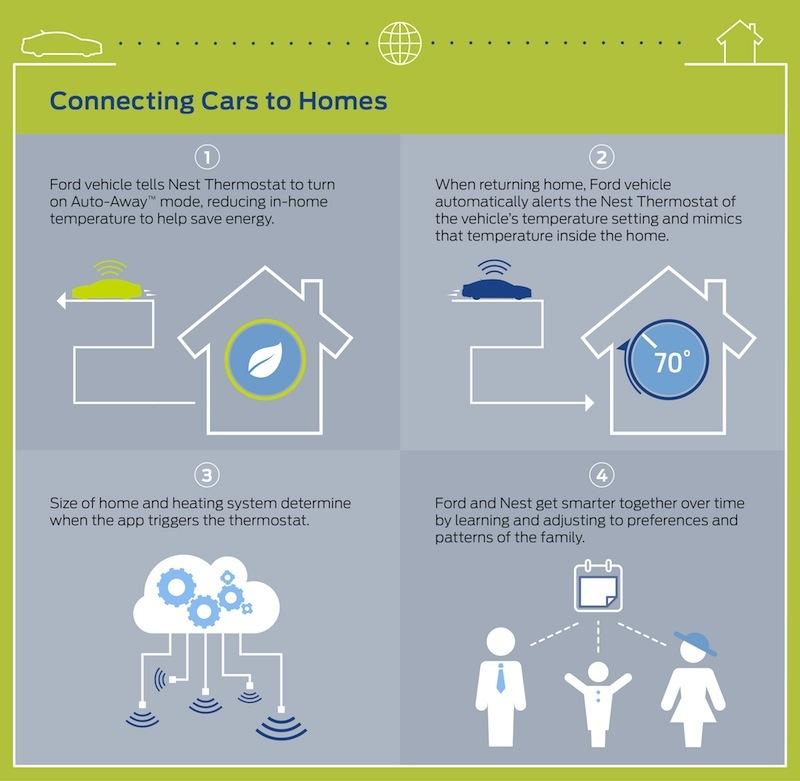

By Mike Tinskey
Today, “vehicle connectivity” is more than just a buzzword – in fact, it’s poised to be policy. On May 14, the Transportation Secretary announced a plan to fast track a rule requiring all new cars to include vehicle-to-vehicle communication.
The rule will be reviewed by the end of 2015, but the auto industry is already well on its way. Propelled forward by advancements in the amount of software a vehicle can process, the potential for connectivity has begun to capture the imagination of the largest manufacturers.
In addition to making life more convenient, the connected car is also poised to make a larger positive impact. As vehicles learn to “talk,” their conversations are becoming increasingly meaningful, and often unexpected. By communicating with the grid, interfacing with our homes and sending data to the cloud, our cars can help enable efficient energy use, address major mobility challenges and more.
Talking to the grid
The U.S. energy system is becoming more distributed as we move away from large-scale fossil fuel-powered plants. While this shift will certainly be more sustainable in the long run, it could also lead to some short-term volatility (after all, we can’t always control when the sun will shine, or when the wind will blow). For that reason, we need our largest plug-in devices to start talking – and electric vehicles are a great place to start.
In 2014, the Electric Power Research Institute (EPRI) brought together seven global automakers and U.S. utility companies to develop a software platform that improves communication between EVs and the grid. During peak hours, the platform can be used to send a request to EVs to stop charging temporarily, releasing pressure on an overloaded grid. Once implemented broadly, participating utilities will be able to offer financial incentives to drivers who opt into this communication system – similar to the way customers can agree to flex their air conditioning for lower rates in some areas.
Talking to your home
Data from Ford Motor Co. has shown that its customers have driven more than 360 million electric miles. As the trend toward vehicle electrification continues, cars and homes are increasingly relying on the same power source: electricity. Noting this trend, automakers are starting to think about how vehicle-to-home communication can make our lives more sustainable.
In 2013, Ford launched MyEnergi Lifestyle (MEL): a collaboration between Nest, Eaton, SunPower, Whirlpool and Infineon designed to optimize energy use in a home setting and promote the use of renewable energy. By using cloud-based automation to switch a bulk of energy consumption to off-peak hours – including EV charging – the program has the potential to cut monthly bills by more than 60 percent.
To this day, MEL continues to progress – in fact, at CES Asia this week, Ford announced that it has just been adapted for the Chinese lifestyle. Across the globe, these types of cross-industry conversations are driving smarter, more automated energy use and less unnecessary pollution. And beyond electricity, there are implications for security, safety, home temperature control and more.
Talking to the cloud
Cars are intimately connected to cities. They move through crowded streets, maneuver across packed parking lots, circle around busy blocks, and weave around bicyclists and pedestrians. All of these touch-points offer an opportunity to collect valuable information that could help city planners reduce gridlock and improve mobility – and make life less painful for urban drivers. But with so many touch-points, where should we start?
One option is to install more sensors in cities by building infrastructure form the ground up. However, this type of project can be costly, as a single sensor-equipped parking space can cost around $500. By leveraging existing vehicle technology, on the other hand, automakers can collect anonymous information that will improve the driver experience, without a massive investment. In other words, the talking becomes quite a bit easier.
Ford’s Parking Spotter app is a great example of this. Using GPS mapping and a national database of all existing parking spaces, Ford is able to detect when a vehicle enters into a parking lot or a parking space, which activates vehicle-mounted sensors. Information about open spaces is then sent to a cloud database, contributing to a near real-time parking map. Using Parking Spotter, drivers can get a better sense of space availability before they begin circling the block.
While convenience may be the main draw, the environmental implications can’t be ignored. In fact, a UCLA study found that drivers in a 15-block area burned 47,000 gallons of gas annually while looking for parking. In short, there’s a lot to be gained.
What’s next?
It’s been said that one conversation can change everything. As more entities enter the dialogue between vehicles and the world around us – and as government shows increasing support for this type of innovation – it’s exciting to think about where the conversation will lead.
Image credit: Ford Motor Co.
Mike Tinskey leads Ford Motor Company’s sustainability activities for electric vehicles, energy and infrastructure at a global scale. His focus is to develop and implement business models, partnerships and technologies to push forward the success of the company’s sustainability plans. He has spearheaded collaborations with a range of innovative groups including SunPower Corporation, Nest, KB Home, the Georgia Institute of Technology, the Electric Power Research Institute (EPRI) and more.
Osama bin Laden: Environmental Activist?


One of the world’s most infamous dictators and terrorists expressed concerns about climate change. Osama bin Laden, who was killed in a raid executed by U.S. Navy SEALs on May 2, 2011, complained about global warming and criticized the international community’s hesitant efforts to aid flood victims in Pakistan.
The founder and leader of al-Qaida, the Islamic extremist group which claims responsibility for the 9/11 World Trade Center attack that took the lives of 2,977 people, said not taming the climate could render “massive consequences.”
The undated letter to “My Islamic Nation,” among many other letters that the U.S. released last week, was recovered in his home in Abbottabad, Pakistan, following his assassination.
“We need to raise Muslim awareness about the dangers associated with depleting the underground water used for agriculture that is not renewable, while it is crucial to establish a network of pipes that joins the agriculture wells with the main network of drinking-water, in order to be used in times of necessity.”
In another letter outlining bin Laden’s concern for global warming, he urged al-Qaida leaders to send a copy of a study on climate change to the Qatar-based Middle East media company Al Jazeera. “Attached is a report about climate change, especially the floods in Pakistan. Please send it to Al Jazeera,” bin Laden wrote in the letter.
Pakistan, a South Asian country of nearly 200 million people, is extremely susceptible to the rainy monsoon season that riddles neighboring India from July to September. While the rough monsoon season always encroaches Pakistan’s borders, certain rainfall is worse than others. Since the turn of the 21st century, Pakistan has been devastated by seven floods, the biggest of which affected more than 5 million Pakistanis. Worsened monsoons and drastic rainstorms are attributed to global warming and climate change.
The revelation of these letters is not the first we’re hearing of bin Laden’s interest in global warming. Early in 2010, he bashed former President George W. Bush for not signing the Kyoto Protocol on regulating carbon emissions. Bush said the Kyoto treaty “exempts 80 percent of the world, including major population centers such as China and India, from compliance, and would cause serious harm to the U.S. economy.”
In the letter recently released by the government, bin Laden emphasizes the fate of Pakistani children, who had been “left in the open, without a suitable living environment, including good drinking water,” he wrote.
Facing the crossroad between terrorism and climate change, President Barack Obama said the media sometimes overstates terrorism when compared to global warming and widespread disease. White House press secretary, Josh Earnest, backed the president, saying “the point that the president is making is that there are many more people on an annual basis who have to confront the impact, the direct impact on their lives, of climate change or on the spread of a disease than on terrorism.”
A 2012 DARA International report estimated that climate change is responsible for an average of 400,000 deaths per year, a number that will continue to climb as conditions worsen. The Global Terrorism Index compiled statistics revealing that nearly 18,000 deaths are terrorism-related in 2013, a number 40 times fewer than homicide.
Image credit: Flickr/Globovisión
Solar, Wind Account for 100 Percent of New Generation Capacity in April

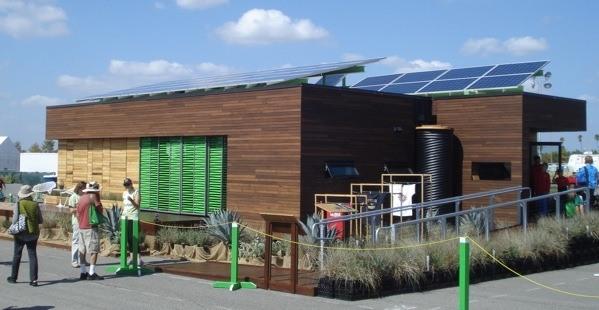
The latest Energy Infrastructure Update from the Federal Energy Regulatory Commission's (FERC) Office of Energy Projects reveals just how much traction renewable energy is gaining as a source of electricity around the nation. Wind and solar accounted for 100 percent of newly-installed generation capacity in the U.S. in April, the American Solar Energy Society (ASES) highlights in its latest Sun Day Campaign update.
New solar, wind, geothermal and hydro power installations, moreover, have accounted for 84 percent of the 1,900 megawatts of new generation capacity installed in the U.S. during the first four months of 2015, FERC reports.
“Renewable energy sources now account for 17.05 percent of total installed operating generating capacity in the U.S.,” ASES points out. Hydropower accounts for 8.55 percent of capicty; wind, 5.74 percent; biomass, 1.38 percent; solar, 1.05 percent; and geothermal steam, 0.33 percent. The total is up from 13.71 percent of capacity in December 2010, when FERC released its first monthly Energy Infrastructure Update.
Swimming against renewables' rising tide
Collectively, wind, solar, geothermal and hydropower provided just over 84 percent of the 1,900 megawatts of new generating capacity the U.S. placed into service during the first third of 2015. The nearly 1,600 MW of new renewable capacity installed across the country from January through April includes:
- 1,170 MW of wind (61.5 percent)
- 362 MW of solar (19.1 percent)
- 45 MW of geothermal steam (2.4 percent)
- 21 MW of hydropower (1.1 percent)
“The balance (302 MW) was provided by five units of natural gas," ASES notes.
Commenting on the latest statistics, Sun Day Campaign's executive director, Ken Bossong, stated:
"Members of Congress and state legislators proposing to curb support for renewable energy, such as Renewable Portfolio/Electricity Standards and the federal Production Tax Credit and Investment Tax Credit, are swimming against the tide. With renewable energy's clear track record of success and the ever-worsening threat of climate change, now is not the time to pull back from these technologies but rather to greatly expand investments in them."
Individuals and corporations fully vested in oil, gas and coal such as the Koch Brothers are spending unprecedented sums to influence federal, state and local legislators, regulators and the broad public in order to stem the fast rising renewables' tide.
Just one example: More solar power generation capacity was installed in North Carolina last year than in any other state barring California, yet a proposed bill would cut the state's renewable portfolio standard by 50 percent.
While Duke has said it isn't taking a position on the rollback, former CEO Jim Rogers lambasted the sponsors of the bill, including its primary booster Mike Hager, formerly a Duke engineer who now serves as North Carolina House Majority Leader.
“Shame on us,” Rogers said during a speech he gave in Charlotte recently, the Charlotte Observer's Bruce Henderson reported May 21.
During his speech, Rogers highlighted North Carolina Sustainable Energy Association reports that green energy companies have created 23,000 jobs and $4.8 billion in annual revenue since North Carolina's RPS went into effect.
“They are not focused on the future,” Rogers said in referring to state legislators. “They are focused on the past.” Later he added that: “It’s just something we need to get behind and figure out how to educate those who claim to be leading us into the 21st century,” according to Henderson's report for the Charlotte Observer.
*Image credits: 1) DOE U.S. Solar Decathlon; 2), 3) FERC
Putting Solar on the Map: A Brief Overview of Solar Mapping


By Kyle G. Crider
As author John Perlin documents in his excellent "Let It Shine: The 6,000-Year Story of Solar Energy," solar has both a rich and lengthy history. Solar mapping, however, has been a much more recent development, driven by computers and geographic information system (GIS) technology.
Solar maps may depict solar energy potential, as well as existing and planned installations. Some maps contain historic information, allowing one to see solar advances over time. Sophisticated map tools allow users to test various solar configurations at a hypothetical installation site, determine cost savings/payback time periods, and even contact installers to “make it so.”
The American Planning Association offers an introduction to solar mapping, including a collection of six briefing papers (PDF) on its website.
The National Renewable Energy Laboratory (NREL) also offers a solar maps resource page that explains: “Solar maps provide monthly average daily total solar resource information on grid cells. The insolation values represent the resource available to a flat plate collector, such as a photovoltaic panel, oriented due south at an angle from horizontal to equal to the latitude of the collector location. This is typical practice for PV system installation, although other orientations are also used.” NREL also offers the Solar Prospector, “a mapping and analysis tool designed to provide access to geospatial data relevant to the solar industry in general and for the siting of utility-scale solar plants in particular.” Energy.gov has similar resources, including a map of Solar Energy Potential.
Cambridge, Massachusetts, has one of the most impressive interactive city-solar maps available. Its Mapdwell Project allows a user to “click on a rooftop or search an address to discover your solar potential.” Mapdwell, “a collective of academics and researchers from the Massachusetts Institute of Technology ... and top professionals,” depicts existing installations as well as solar potential, and users may test various solar power configurations and determine energy cost savings for new installation sites.
There are excellent solar-mapping resources available at the state level, too. For example, the Georgia Energy Data site, a partnership between Southface and Georgia State University’s Geospatial Laboratory, includes maps for:
- Solar Installations and Firms – “Explore Georgia’s 1,000+ solar installations and firms. Search for capacity, installer, manufacturer, installation date and more by various geographies including county, utility territory and political districts.”
- Electricity Production – “Visualize Georgia’s electric power plants, wind installations and major solar installations. Search for source, capacity, plant name, plant owner/operator and more by various geographies including county and political districts.”
Finally, the Solar Energy Industries Association (SEIA) hosts an interactive map for their Brighter Future: A Study on Solar in U.S. Schools project, which displays information on existing solar installations, as well as highlighting potential savings for future school installations.
There is a famous map-related quote, from “Tobler’s First Law of Geography," that states: “Everything is related to everything else, but near things are more related than distant things.” By showing us the potential for solar energy and cost savings, solar maps are helping bring solar closer to us, sooner.
Image credits: 1) Flickr/Christine 2) Mapdwell Project 3) Georgia Energy Data 4) Brighter Future: A Study on Solar in U.S. Schools
Kyle G. Crider is Energy Project Manager for the Alabama Environmental Council and the Alabama Solar Knowledge project. Kyle holds a bachelors in Environmental Studies and a Master of Public Administration (MPA) degree with a double-emphasis in Urban Planning & Policy Analysis. He is a Leadership in Energy and Environmental Design Accredited Professional, Neighborhood Development (LEED AP ND).
CSR driving access to new markets, says ACCSR


Innovative corporate social responsibility practises are helping more companies than ever before to access new markets, according to the 2015 State of CSR in Australia and New Zealand Annual Review, released by the Australian Centre for Corporate Social Responsibility (ACCSR).
The Review, which is the largest ongoing longitudinal research into CSR in Australia and New Zealand and one of the biggest in the world, examined the stages of CSR development in organisations and the role of the chief sustainability officer (CSO). This year over 1,000 respondents participated in the research the highest number in its history.
The Review classified organisations into three stages of CSR maturity - Initiators, Integrators, and Innovators. “There are striking differences between organisations’ ability to use CSR to drive innovation, depending on their level of CSR maturity. Since 2012, there has been a significant jump in the number of organisations reporting that CSR helps them to access new markets. This is being driven primarily by the telecommunications, finance, and insurance industries,” said ACCSR’s md, Dr Leeora Black.
Most CSOs were more optimistic about their organisation’s CSR progress than those who work outside a sustainability role. CSOs classified their own organisations as “innovators” in much higher numbers than those outside a sustainability role.
The Annual Review also revealed this year’s CSR Top Ten — the organisations that scored greater than 75% across the CSR management capabilities, as ranked by their employees. They are Arup, BHP Billiton, Disney, IAG, NAB, PwC, Sydney Water, Telstra, Teachers Mutual Bank and Westpac, with half of these organisations making the list for at least the second year running.
You can download the full Review here.